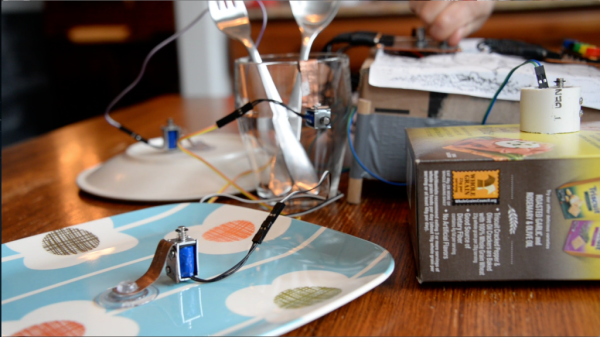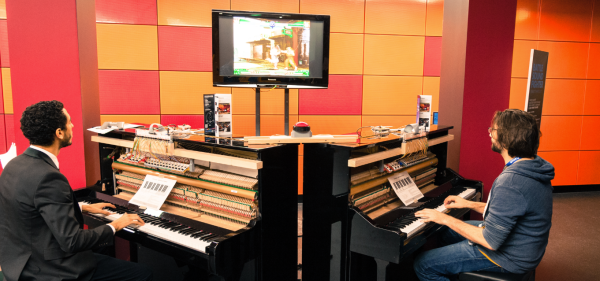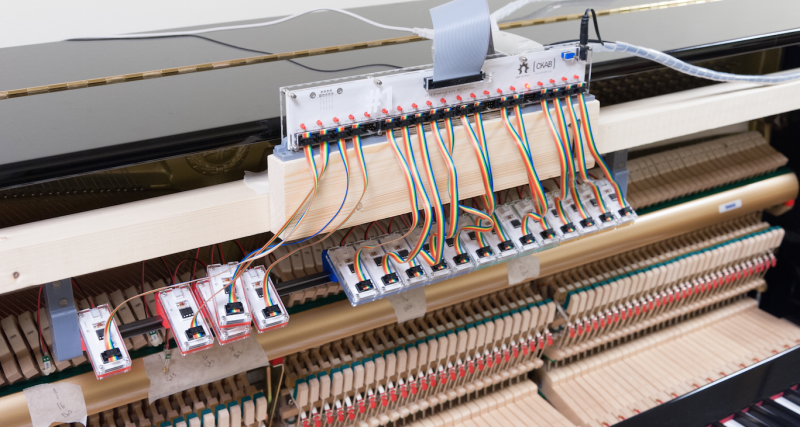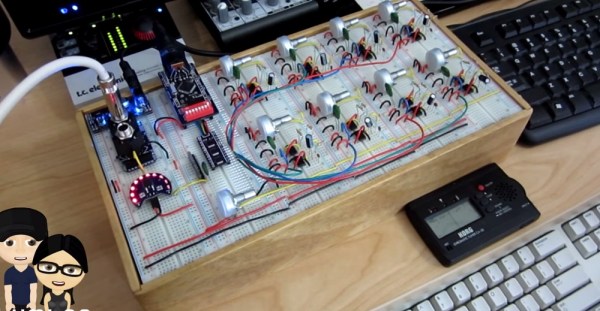Remember those childhood memories of your grandmother telling you to stop hammering away at her pots and pans? Odds are pretty good that the last time you struck a beat with her dishware, you had a few more years to go before you understood tempo and rhythm. Now that we’re a bit older, [Jiffer Harriman] invites us to return to our kitchen armed not only with those childhood memories, but also a with the Kitsch-Instrument: a suite of solenoids, a controller, and a software pipeline to algorithmically turn your kitchen into a giant percussion instrument.
The Kitsch-Instrument is a modular music system that enables the user to pull a percussive pattern out of his or her everyday kitchen utensils. The percussion hits come from a series of mosfet-driven solenoids that can be fixed onto plates, cups, and other everyday items through a variety of clips. These solenoids are collectively driven by two stacked custom Arduino shields that are, in turn, driven either by hand with a button-interface, or algorithmically with a pattern generated by the graphical programming language, Pure Data.
In designing this project, [Jiffer] and his team intended to bring not just a musical tool to young tinkerers. They also aimed to help educate these young minds with multiple entry points into their project. For top-level users, adding buttons is almost as easy as plug-in-and-play. For experienced circuit designers and tinkerers, the entire project is open source with the board layout and software available for download. Overall the project can be explored from lower and lower levels while still retaining its functionality as a musical interface.
If you suspect that this project seems to have that same whimsical sense as the Auto-Meter-Reader Feeder, you’d be right! [Jiffer] and [Zack] hail from the same lab at the University of Colorado. We’re excited to see what upcoming beats will arise from a truly off-the-shelf symphony.
via the [Tangible Embedded and Embodied Conference]
Continue reading “Kitsch-Instrument Pulls A Sonata Out Of Your Dishware”



















